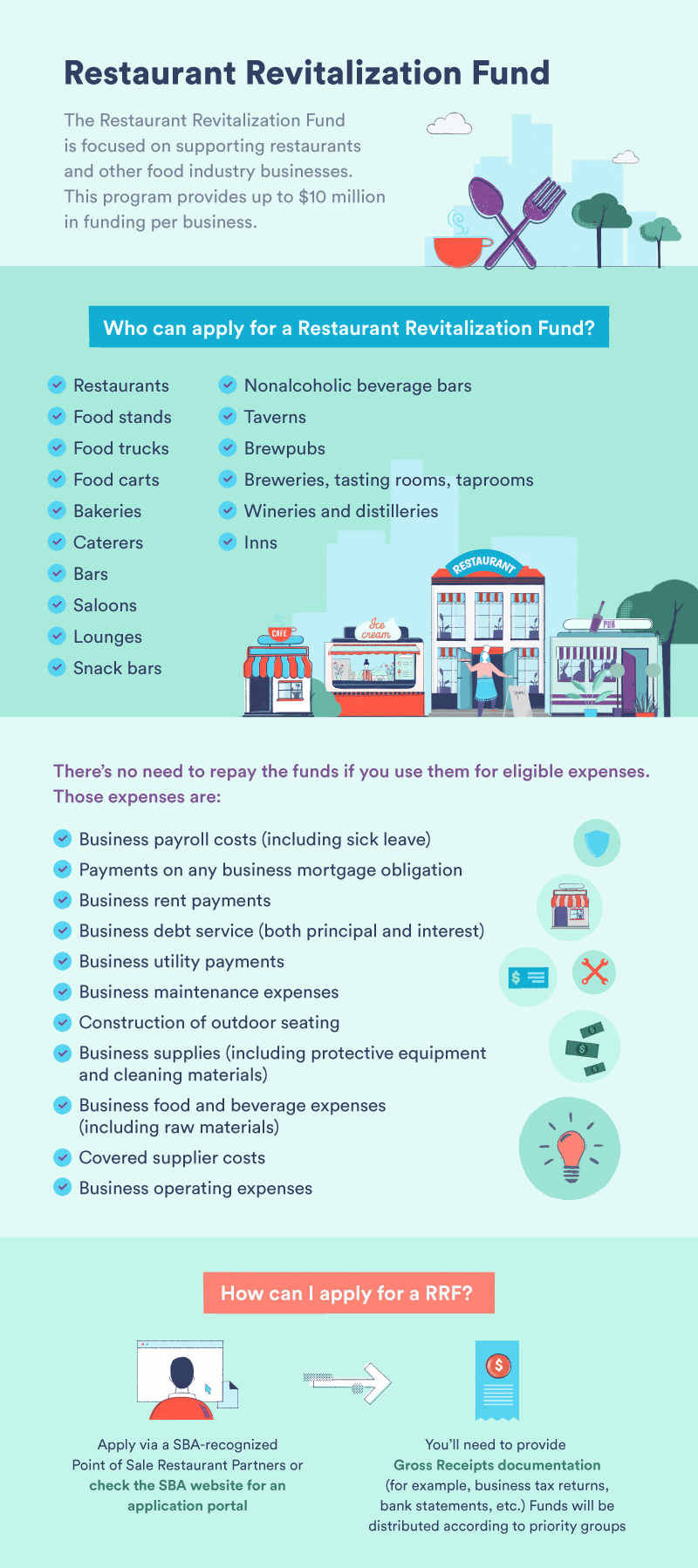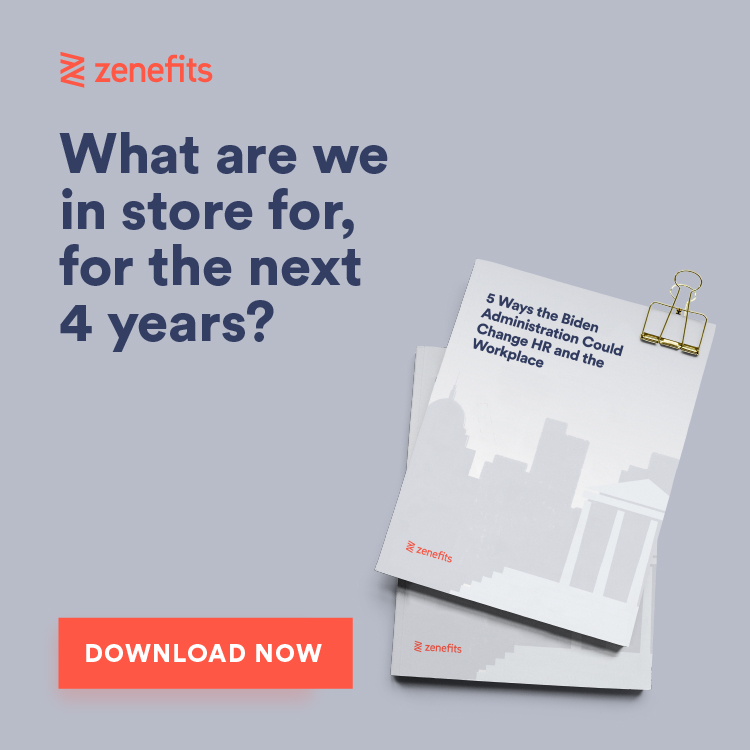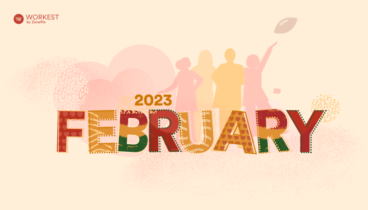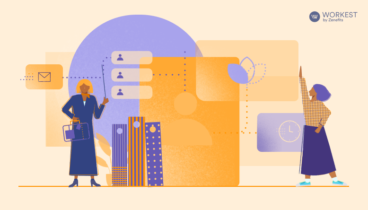What you need to know about the Restaurant Revitalization Fund (RRF)
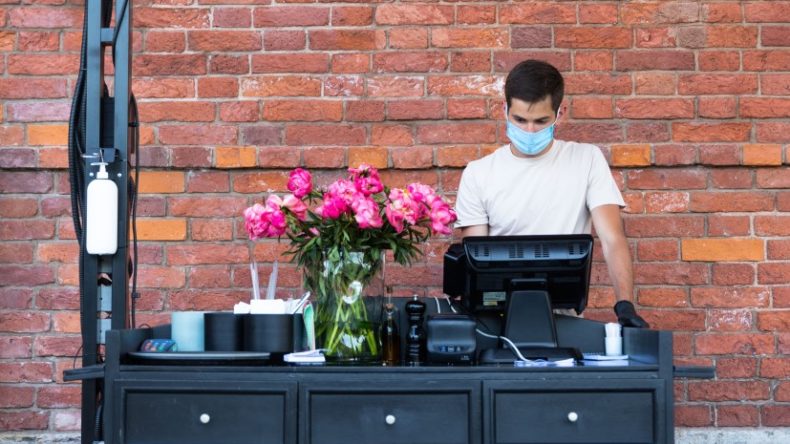
The Restaurant Revitalization Fund is part of a $28.6 billion federal grant program focused on supporting restaurants and other food industry businesses. This program provides up to $10 million in funding per business, with no more than $5 million per physical location. And as long as the funds are used for eligible purposes before March 11, 2023, there’s no need to pay the money back.
The RRF is one of many government programs to help provide relief for small businesses impacted by COVID-19. The other programs include:
RRF eligibility
Like the SVOG awards, the RRF funds are industry-specific. Restaurants, food stands, food trucks, food carts, caterers, bars, saloons, lounges, snack bars, nonalcoholic beverage bars, and taverns are just some of the eligible businesses. Other businesses that can benefit from the RRF, so long as 33% of their gross receipts come from onsite sales, are:
- Bakeries
- Brewpubs, tasting rooms, taprooms
- Breweries and/or microbreweries
- Wineries and distilleries
- Inns
In addition, licensed facilities of a beverage alcohol producer where the public may taste, sample, or purchase products, can also apply for the RRF.
RRF loan terms
As we mentioned before, there’s no need to repay the funds if you use them for eligible expenses. Those expenses are:
- Business payroll costs (including sick leave)
- Payments on any business mortgage obligation
- Business rent payments. Note: this does not include prepayment of rent
- Business debt service (both principal and interest). Note: this does not include any prepayment of principal or interest
- Business utility payments
- Business maintenance expenses
- Construction of outdoor seating
- Business supplies (including protective equipment and cleaning materials)
- Business food and beverage expenses (including raw materials)
- Covered supplier costs
- Business operating expenses
How to apply for a RRF loan
Business owners can apply via a SBA-recognized Point of Sale Restaurant Partners or directly in a forthcoming online application portal. Currently they are not accepting forms, but you can begin preparing your application with SBA Form 3172.
But that’s not all. You’ll need additional documentation to complete your application. In addition to completing the IRS 4506-T form, you’ll need Gross Receipts documentation.
Examples include:
- Business tax returns (IRS Form 1120 or IRS 1120-S)
- IRS Forms 1040 Schedule C; IRS Forms 1040 Schedule F
- For a partnership: partnership’s IRS Form 1065 (including K-1s)
- Bank statements
- Externally or internally prepared financial statements such as Income Statements or Profit and Loss Statements
- Point of sale report(s), including IRS Form 1099-K
There is additional documentation required for brewpubs, tasting rooms, taprooms, breweries, wineries, distilleries, or bakeries. Since you need to prove that onsite sales to the public made up at least 33% of gross receipts, you’ll need to provide paperwork such as the Tax and Trade Bureau (TTB) Forms 5130.9.
RRF funds will be distributed in priority groups.
Similar to the SVOG model, RRF funds will be distributed in priority groups. In this case, there are two divisions: a main priority group and general applicants.
The priority group will receive funds within the first 21 days, and the general applicant group will receive funds until the RRF is exhausted.
The priority group consists of a small business concern that is at least 51% owned by one or more individuals who are women, veterans, or the socially and economically disadvantaged.
Socially disadvantaged individuals are business owners who may have experienced racial or ethnic prejudice or cultural bias because of their identity.
Economically disadvantaged individuals are those who have diminished access capital and credit opportunities as compared to others in the same business area.
Can you use more than one fund?
In some cases, you may be able to get support from more than one SBA program.
If you have an RRF pending application or have received funding:
- You cannot receive a SVOG award
- Your PPP loan will affect your RRF amount calculation, and you cannot apply for more than one RRF
- You can apply for EIDL

